On October 16, Nestor Topchy did a performance at the Silos, perhaps the strangest and most awkward visual art venue in Houston. The Silos are actual grain silos, defunct artifacts of industrial agriculture. The Silos has 34 disused silos that it uses to display art. The spaces are a real challenge for artists. They are round, for one thing. Topchy’s performance made use of the round space. Topchy told me the performance did not have a name because at the last second before the performance, he changed what he planned to do.
The silo space he was in had a large round platform a couple of inches high, covered by a circular piece of unprimed canvas. The walls were covered with paper. In the center of the canvas was a dummy covered in black and white fabric. Hanging from the center of the ceiling was a sphere. It appeared to be a light covering.
Before Topchy came out, Volker Eisele, one of the founders of Sculpture Month Houston, came out to talk about the performance. He discussed Topchy’s connection with artist Yves Klein and in particular about International Klein Blue, the pigment that Klein invented and that Topchy has used frequently in the past in his sculptures and performances. But this must have been one of the last minute changes—Topchy did not use IKB.
He used sumi ink in the performance. He mentioned to me beforehand that he was going to use sumi ink. I asked him if he was going to grind it in person. Ordinarily, sumi ink comes in a compressed, solid block that the artist grinds on a suzuri stone, mixing it with water to get the density of black desired. But it turns out you can buy sumi ink in a bottle, and Topchy had two bottles of the stuff that he poured into the sphere.
Once the sphere was full, Topchy pulled a plug from the bottom of the sphere to let the ink leak out. He then set the sphere swinging in a circle.
As it spun around, it produced a fuzzy ink line on the canvas. At first the line was pretty distinct, but as the watery ink soaked into the unprimed canvas, it the line started to fill in.
Topchy knocked the dummy over so it was laying face up. He took off his jacket and let the ink pour directly onto the dummy’s face.
He wrestles the dummy, which appeared to be pretty heavy, and mashed its ink-covered face into the wall. Then he lay down directly under the sphere.
He let it drip ink into his mouth. Then he did something on the side of the silo which I couldn’t see from the angle from where I stood. The silos are not really conducive for audiences to view performances within.
He bowed to the audience.
And the performance was over.
Once it was done, one could enter the silo and see what he was doing on the wall. He sprayed the ink from his mouth over his hands to create a negative impression of them.
This form of negative hand stencils is one of humanity's earliest forms of art, found in cave paintings all over the world.
This is from Cueva de las Manos in Argentina. They are estimated to be between 13,000 and 9,500 years old.


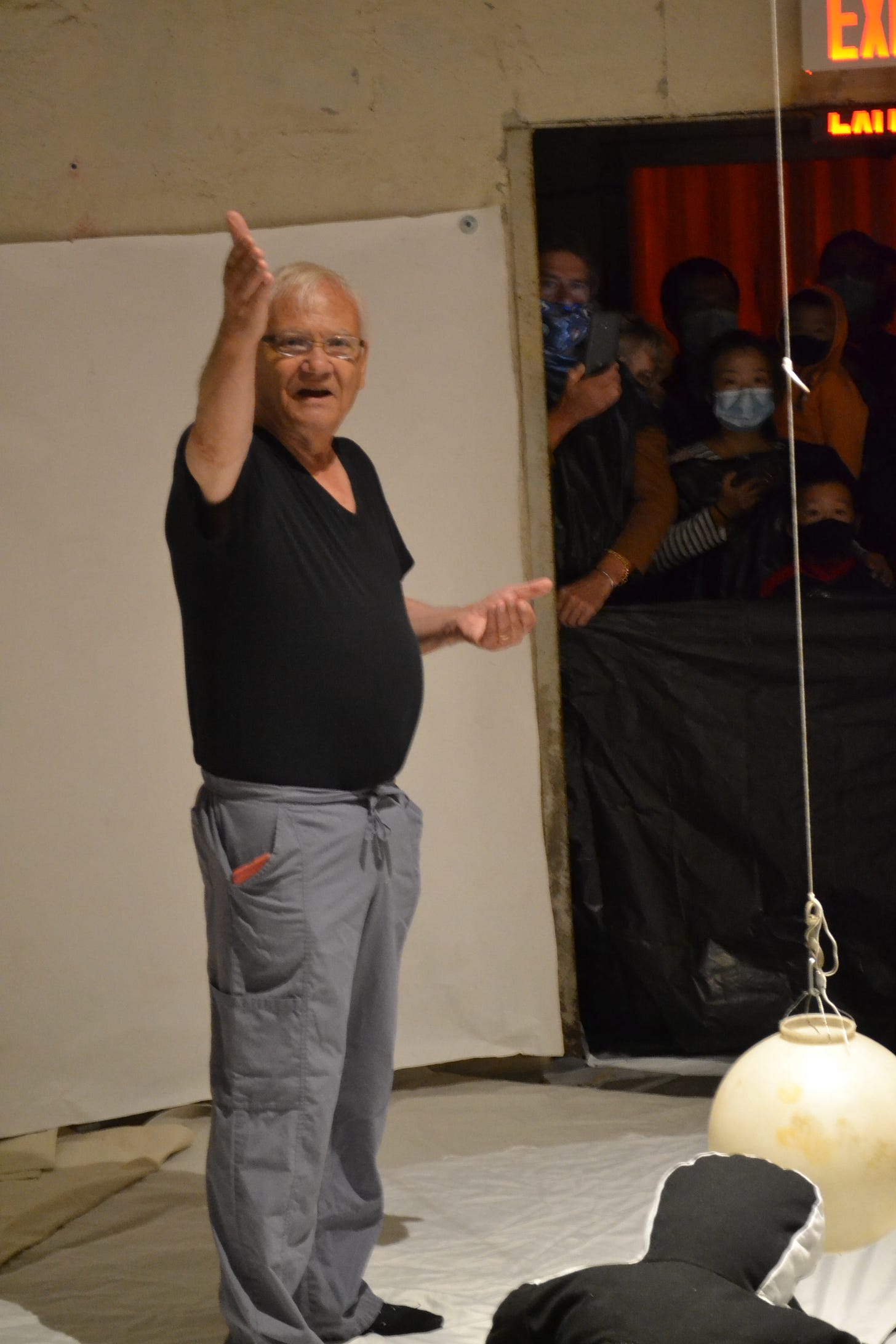


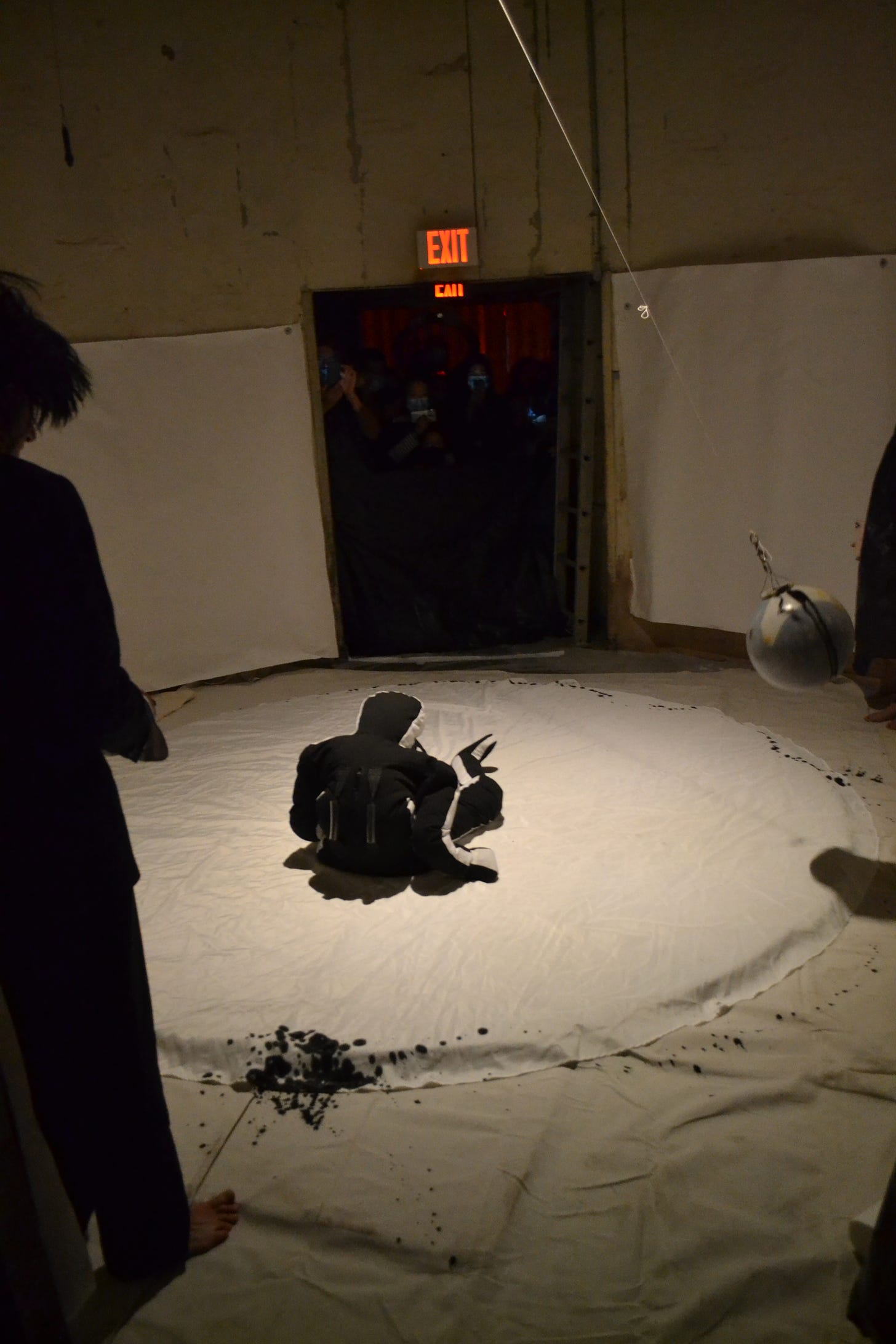
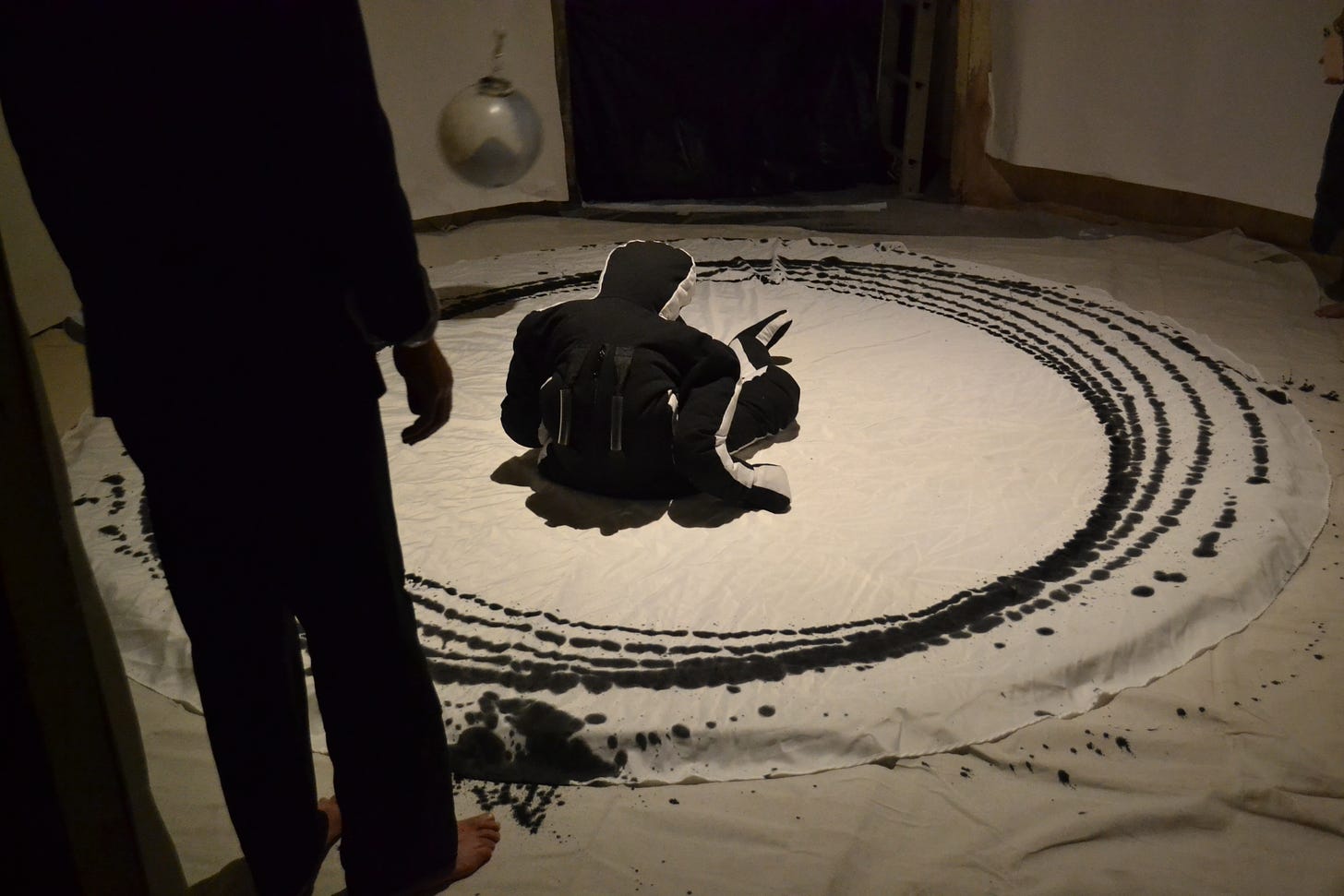
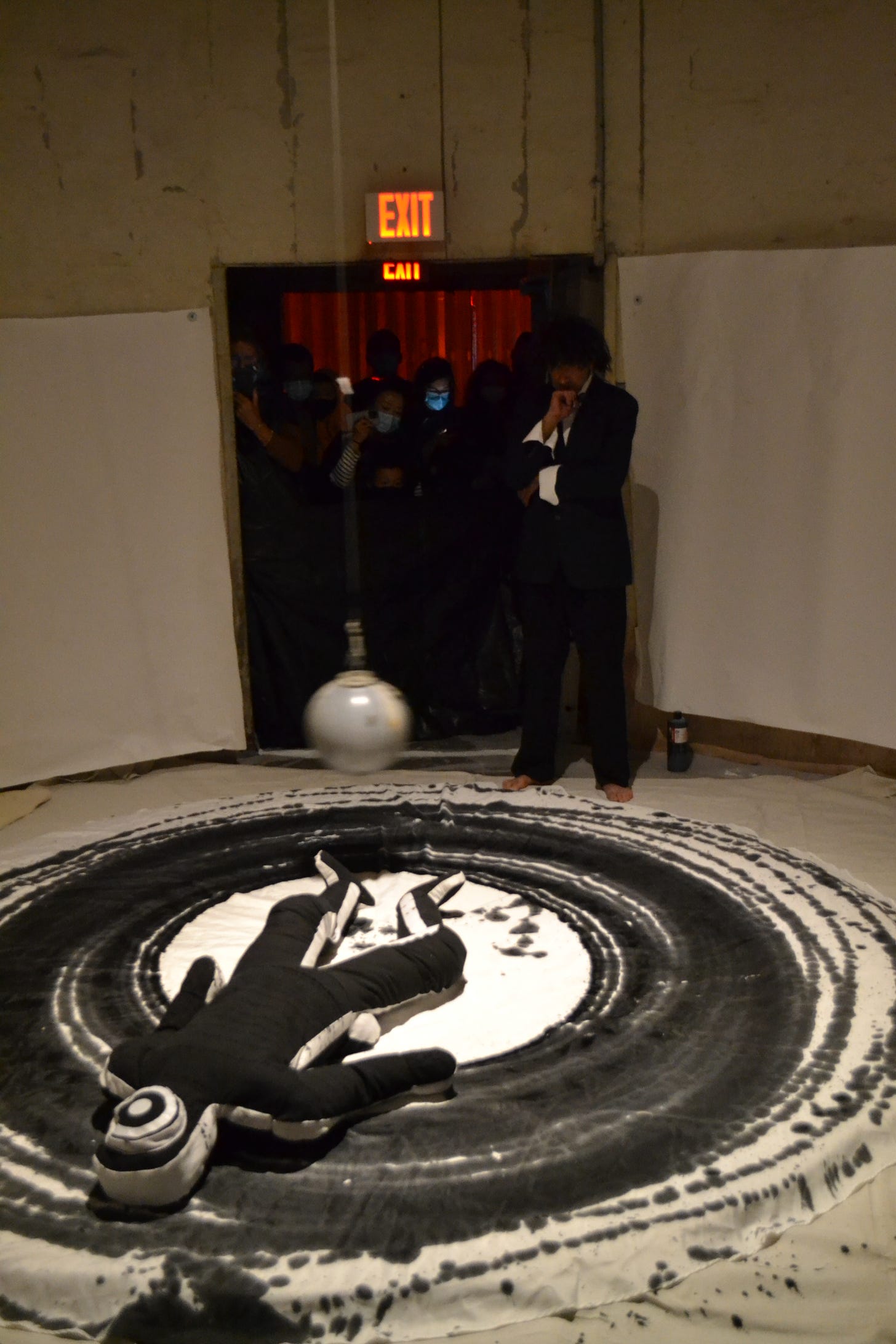
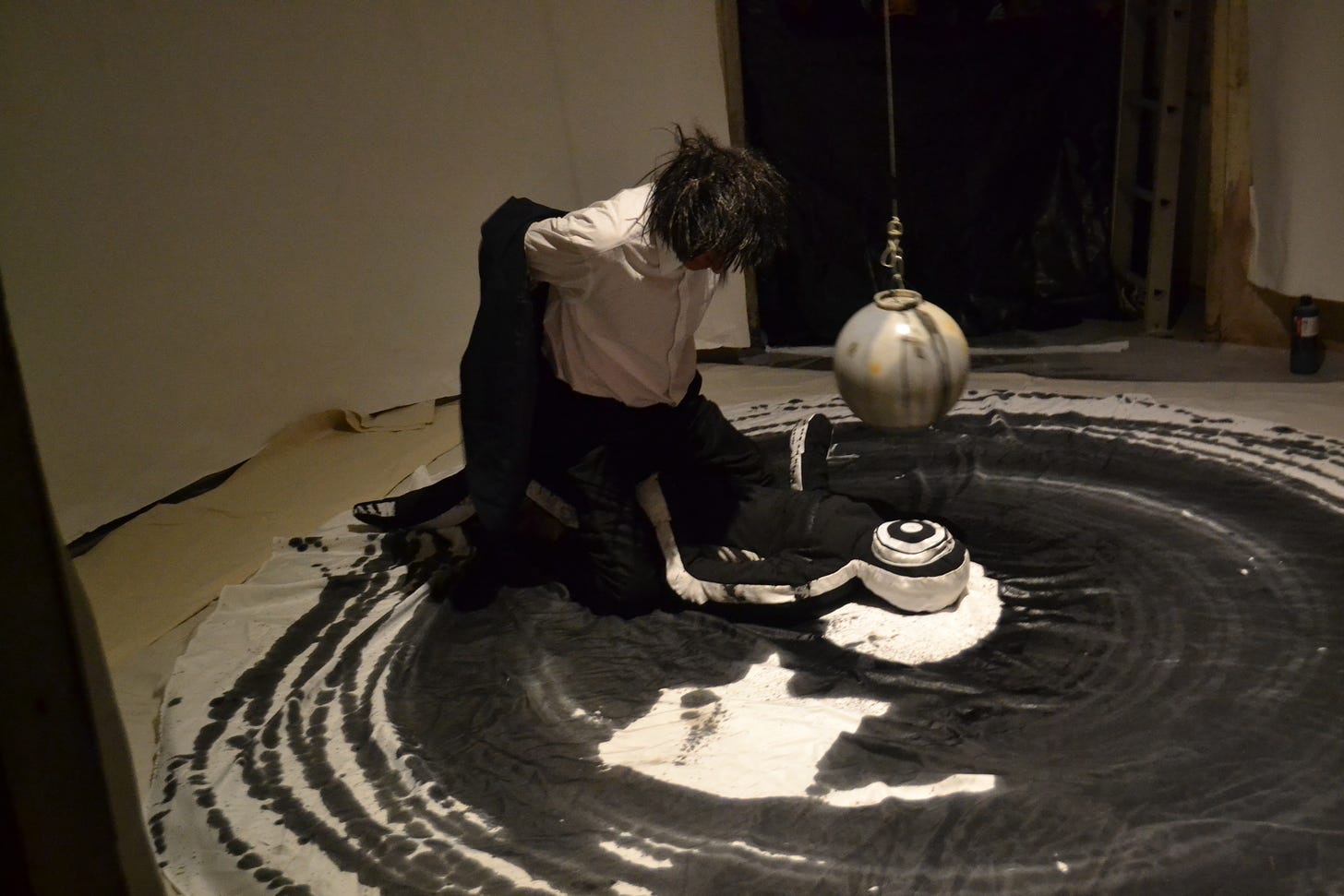

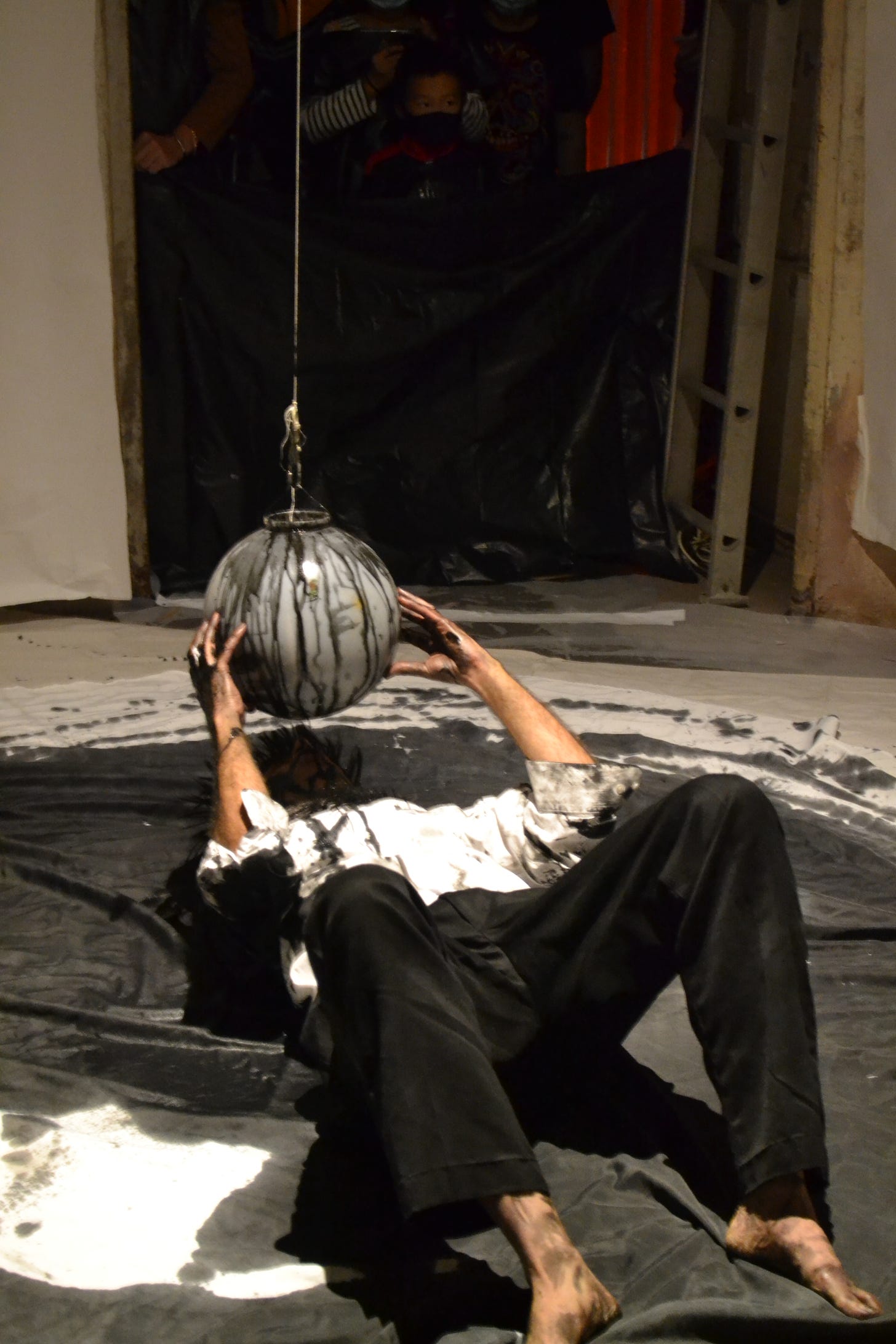

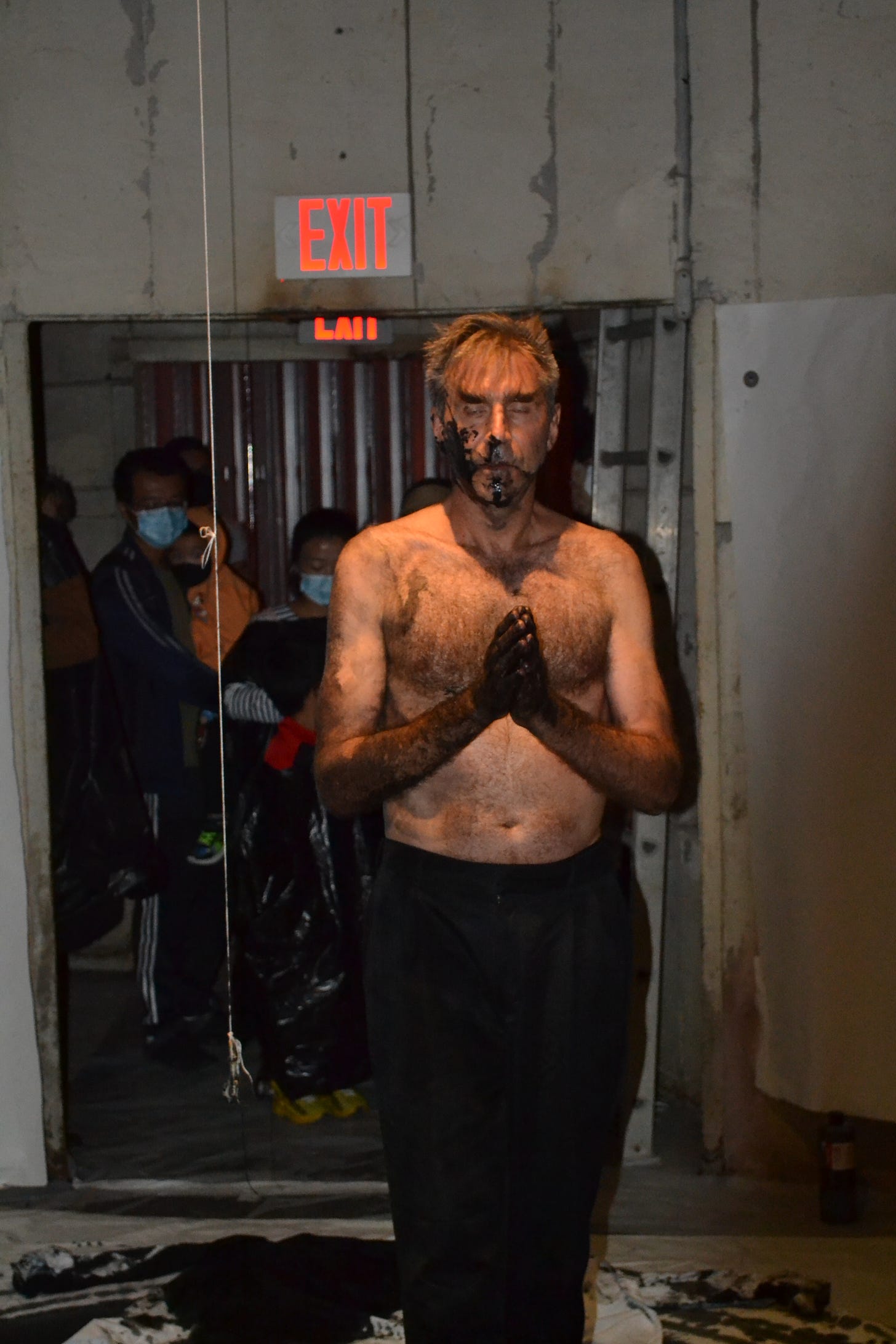
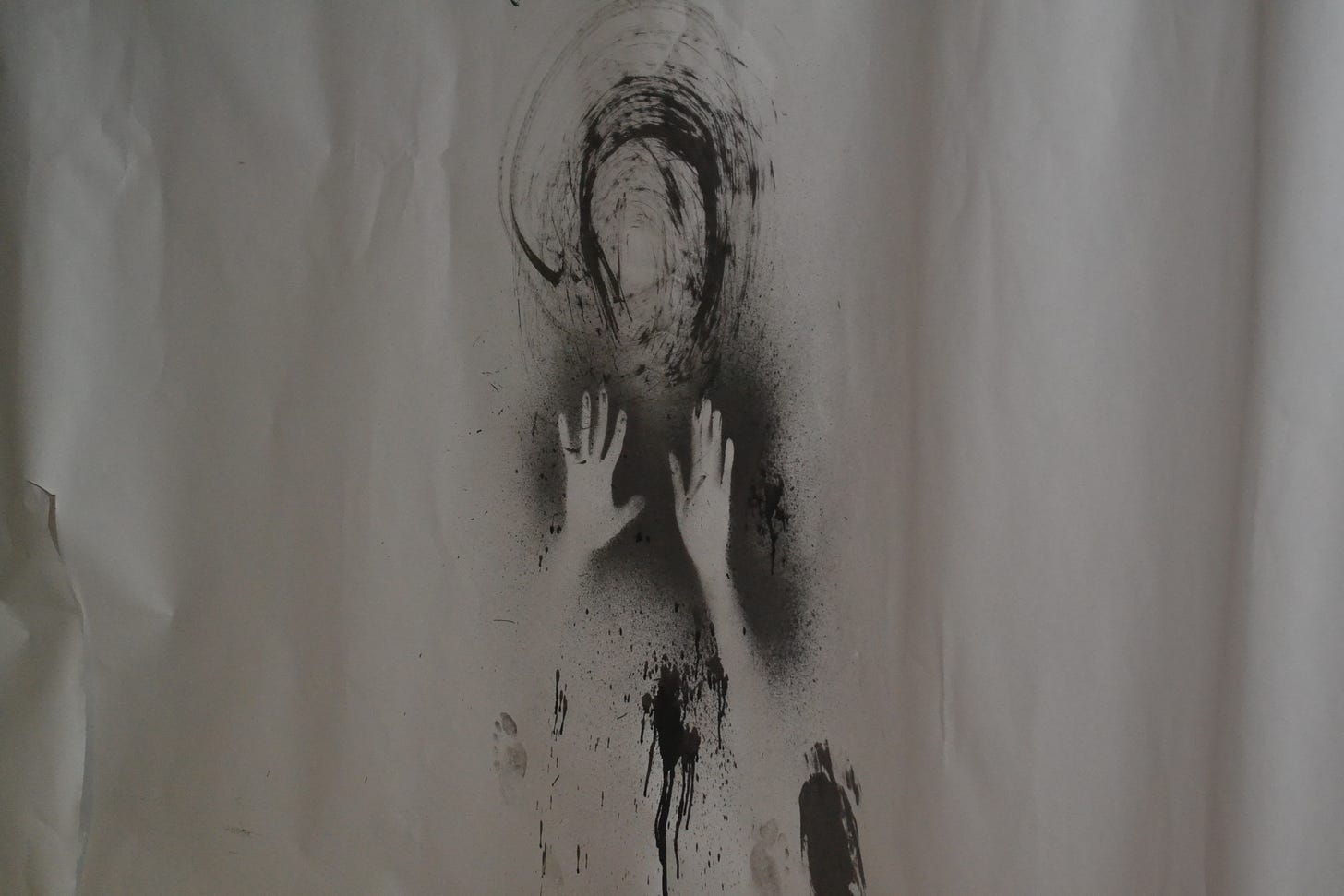


No comments:
Post a Comment